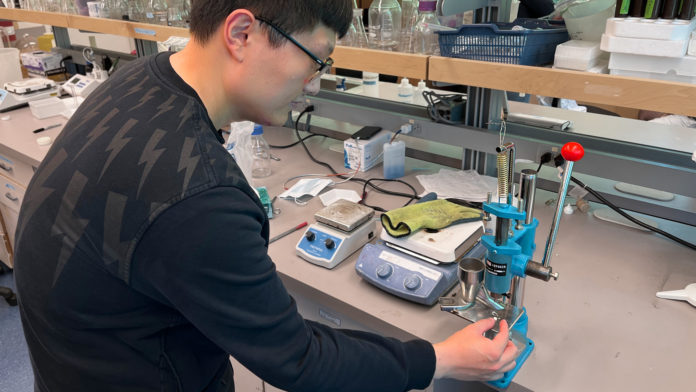Canada recently celebrated the 100th anniversary of the discovery of insulin — a lifesaving breakthrough that has improved the health of millions of people around the world. But since then, little has changed in terms of how we deliver it to patients.
Most people who use insulin to manage their diabetes still inject themselves multiple times a day, which isn’t the most pleasant task. The insulin also needs to be stored under refrigeration, and the single-use syringes and needles also pile up.
While there are several emerging pump technologies that could dose insulin in an automated way, there are still many barriers to ditching manual insulin injections, including increased cost.
Now a team of researchers working with Anubhav Pratap-Singh, professor of land and food systems at the University of British Columbia, are one step closer to delivering insulin through a shelf-stable pill. Although it has not yet been tested in human clinical trials, the preliminary results in animal models are promising. Their most recent paper was published in Scientific Reports.
The oral tablet is held between the gum and cheek until it dissolves. This is called buccal delivery, where the insulin is absorbed through the thin membrane that lines the inner cheek and back of the lips. This allows nearly the entire dose to arrive at the liver intact.
By contrast, a swallowed insulin pill would have to go through the stomach, where most of it would be destroyed. This route would require about five times more insulin to make up for the wasted fraction.
“Even after two hours of delivery, we did not find any insulin in the stomachs of the rats we tested. It was all in the liver and this is the ideal target for insulin — it’s really what we wanted to see,” said first author and PhD candidate Yigong Guo in a press release.
To make their pill, the team used spray drying to load the insulin in chitosan nanoparticles, making use of this special process and biopolymer to preserve the insulin. The formulation has a fast release profile, allowing it to absorb in half an hour. This compares favourably to insulin injections, whereas most swallowed insulin tablets release much more slowly, over around two to four hours.
The team hopes that their method could reduce the cost of insulin doses because the pills are easier to make and wouldn’t require syringes to administer. They also don’t need to be kept cool, making life more convenient for users. Shipping at ambient temperature would also be easier, and this may improve access for more patients globally.
Although these pills wouldn’t have the benefits of finely automated regulation like an insulin pump system could, it’s a cost effective approach that avoids puncturing the skin at all. This makes it more likely that patients will stay on top of their doses for better control of their blood sugar, and fewer complications from leaving it unchecked.
For the millions of diabetic people who rely on daily insulin injections today, that would be a welcome innovation.








































